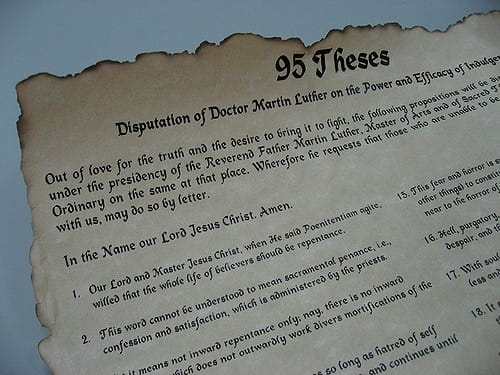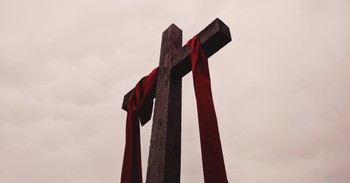
Pope Leo X's Infamous Indulgence
Warlike Pope Julius II died in 1513, and his successor, Giovanni de Medici, took the name Pope Leo X. If Julius loved to fight, Leo preferred amusement. His self-indulgence destroyed the unity of the western church when he bartered sin for money in the most infamous indulgence of church history.
From birth, Leo had been earmarked for the church. At the age of seven, he was made a monk. By thirteen, he was a cardinal. In between, the boy had been abbot. He became pope before turning forty.
His tastes were costly. He was only too happy to spend lavishly on himself and voluptuous entertainment. Humanists with few morals swarmed at a papal court where wit mattered more than a witness. Plays and shows, ballets and games abounded. No chance for a hunt was turned down. The papal treasury funded preeminent artists such as Raphael. Julius left an entire treasury. Leo drained it in eight short years.

Selling "Salvation"
St. Peter's Basilica was being rebuilt, but there was no money. Leo decided to solve the problem in a time-honored fashion. On March 15, 1517, he declared that anyone who contributed to the cathedral would be granted an indulgence. Although, in theory, an indulgence was only a remission of penalties meted out in this world by the church, in practice, it was hawked as if it covered the actual guilt of sins and could release souls from Purgatory. The gist of the indulgence was as follows:
"...[I] absolve you ...from all thy sins, transgressions, and excesses, how enormous soever they be...and remit to you all punishment which you deserve in purgatory on their account and I restore you...to the innocence and purity which you possessed at baptism; so that when you die the gates of punishment shall be shut... and if you shall not die at present, this grace shall remain in full force when you are at the point of death."
Sent to preach indulgences in Germany was a Dominican named Tetzel. Tetzel got above himself in his promises, implying that the indulgence even covered the future sins the buyer was now harboring in his heart. Frederick the Wise refused to allow the indulgence to be preached in his territory of Saxony, mostly because he was reluctant to allow Saxon coin to leave his financially-depleted realm. Tetzel came as near the border of Saxony as he could. Folk from Wittenberg crossed over and bought the prized papers.
Sparking the Reformation
Afterward, a few doubted the efficacy of the writs. They solicited the opinion of a middle-aged monk named Martin Luther. Luther refused to confirm their value. Instead, in an accepted tradition, he posted theses for debate on the door of Wittenberg castle church, where a large crowd was expected. The sequel is well known. From those Ninety-Five theses, the Reformation was born when Leo refused to see a problem with the disgraceful sales.

Bibliography:
- Bainton, Roland H. Here I Stand. New York: Mentor, 1950.
- Begni, Ernesto. Vatican; Its history--its treasures. New York: Letters and Arts, 1914.
- Brusher, J. Popes Through the Ages. Princeton, New Jersey: Van Nostrand, 1964.
- Durant, Will. The Reformation. New York: Simon and Schuster, 1957.
- Eerdman's Handbook to the History of Christianity. Editor Tim Dowley. Berkhamsted, Herts, England: Lion Publishing, 1977.
- "Indulgences" and "Leo X." New Schaff-Herzog Encyclopedia of Religious Knowledge. Grand Rapids: Baker Book House, 1954.
- "Indulgences" and "Leo X." The Oxford encyclopedia of the Reformation. Editor in chief Hans J. Hillerbrand. New York : Oxford University Press, 1996.
- Kent, W. H. "Indugences." The Catholic Encyclopedia. New York: Robert Appleton, 1914.
- "Leo X." The Oxford Dictionary of the Christian Church. Edited by F. L. Cross and E. A. Livingstone. Oxford, 1997.
- Loffler, Klemens. "Leo X." The Catholic Encyclopedia. New York: Robert Appleton, 1914.
- Mee, Charles L., jr. White Robe, Black Robe. New York, Putnam, 1972.
- Montor, Artaud de. The Lives and Times of the Popes. New York: The Catholic publication society of America, 1910 - 11.
- Various encyclopedia articles.
Last updated December 2022, Photo credit: Caleb Miller/Unsplash


